
BIG and HOK to add timber terminal and control tower to Zurich Airport
Danish architecture studio BIG and US firm HOK have revealed the design for a mass-timber terminal and control tower named Dock A at Zurich's airport.
Expected to open in 2032, the building will be built largely from locally sourced timber and will become the airport's largest terminal.
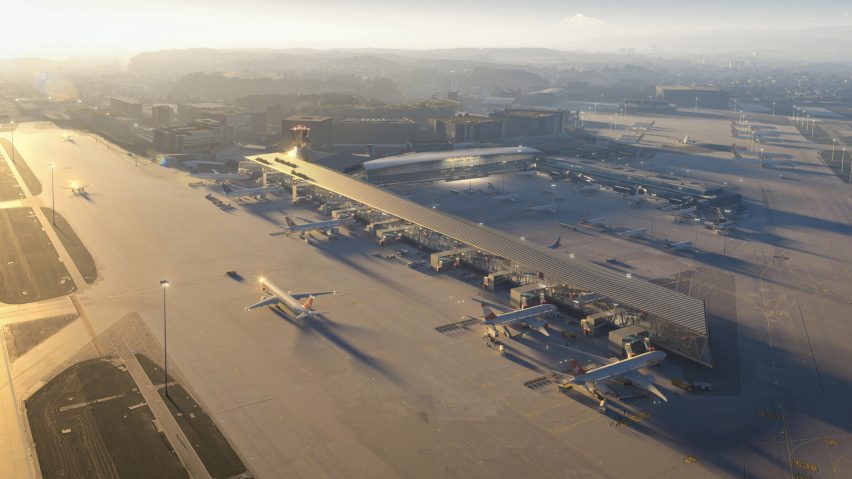
Located adjacent to the existing Airside Centre and Terminal 1, Dock A will contain a long pier flanked by gates attached to a top-lit atrium surrounded by offices, lounges, and shops. A traffic control tower will rise from the centre of the atrium.
The building will be divided into seven floors with arrivals and departures on the top floors and an immigration hall located below ground.
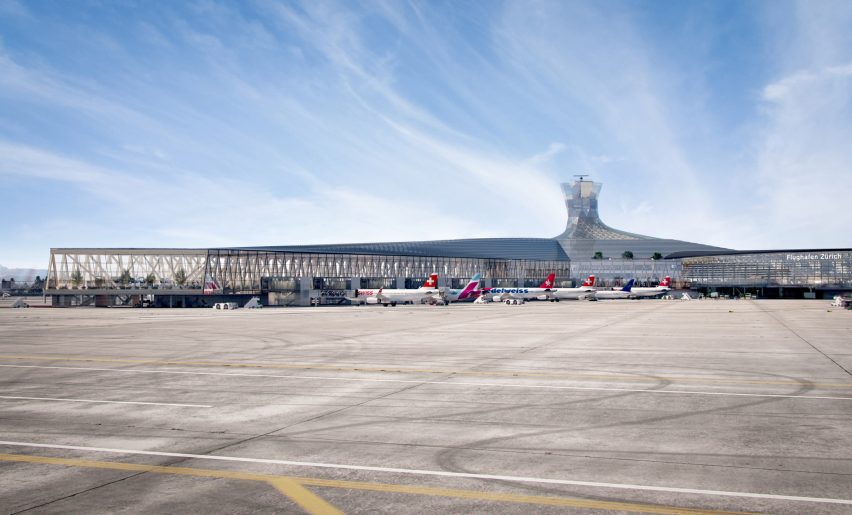
Designed to reflect alpine buildings and build on the long-standing tradition of wood construction in Switzerland, the main structure of the terminal will be formed of V-shaped timber columns.
A linear skylight, which widens until opening up above the atrium, will let daylight into the building and will act as a natural wayfinding system.
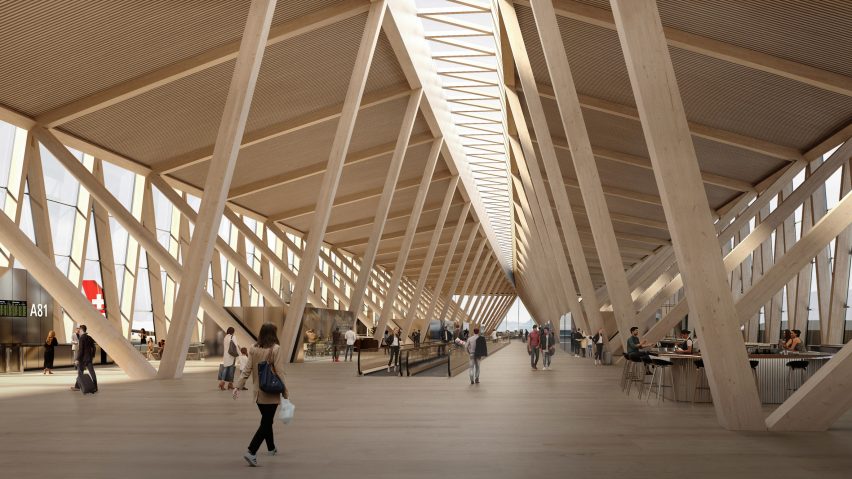
"As airports grow and evolve and as international guidelines and safety requirements change, airports tend to become more and more complex: Frankensteins of interconnected elements, patches and extensions," said BIG founder Bjarke Ingels.
"For the new main terminal of Zurich Airport, we have attempted to answer this complex challenge with the simplest possible response: a mass timber space frame that is structural design, spatial experience, architectural finish, and organisational principle in one."
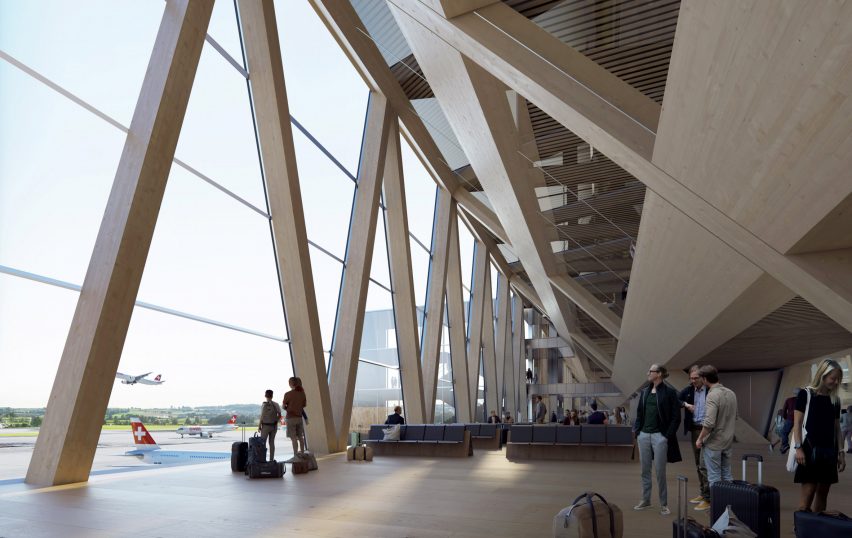
The terminal's interiors will use large amounts of timber. Along with the main structure, the material will be used for the floors and ceilings.
"The visually calm material palette, natural light, and biophilia help redefine passenger expectations of the typical airport experience," said BIG partner Martin Voelkle.
The replacement of the ageing Dock A follows numerous developments in Zurich Airport, including the additions of Dock E by architecture studio AGPS in 2001, Grimshaw's 2014 Airside Centre, and Japanese architect Riken Yamamoto's The Circle, which opened in 2020.
BIG's design for Dock A was chosen from a shortlist of 10 designs drawn up by studios including Foster + Partners, SOM, and Grimshaw.
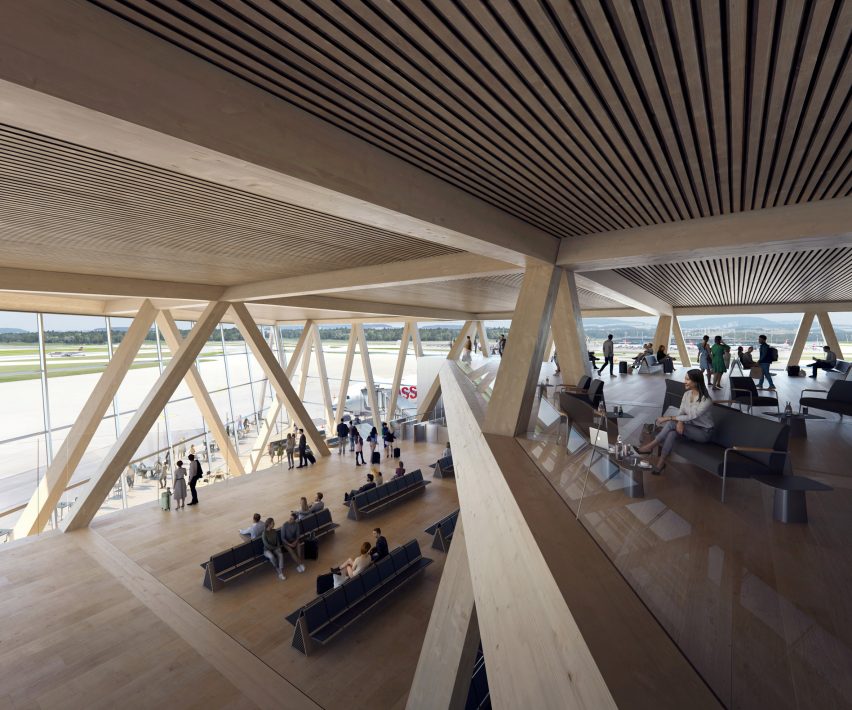
Having grown to become one of the world's best-known studios since it was founded in 2005, BIG recently revealed its designs for a treehouse in Swedish Lapland and for the "world's most environmentally friendly furniture factory" in Norway.
BIG's extension to Zurich Airport follows recent debates over whether architects should be continuing to design airports with rising concerns about the environmental impact of air travel.
At the end of 2020, designs for an airport in Saudi Arabia by UK studio Foster + Partners drew criticism from activist group Architects Climate Action Network, prompting the firm to withdraw from Architects Declare.
Zaha Hadid Architects was also criticised for its design of Western Sydney International Airport. The studio, which was a founding signatory to the Architects Declare manifesto along with Foster + Partners, also withdrew from the group as a result.
At the time, Architects Declare stated that their initiative was being "undermined by a few practices", with leading architects "clearly contravening" climate pledges.
Foster + Partners founder Norman Foster responded with a criticism of architects' "hypocritical moral stance" on the issue, arguing that "the carbon footprint of air travel is relatively small".